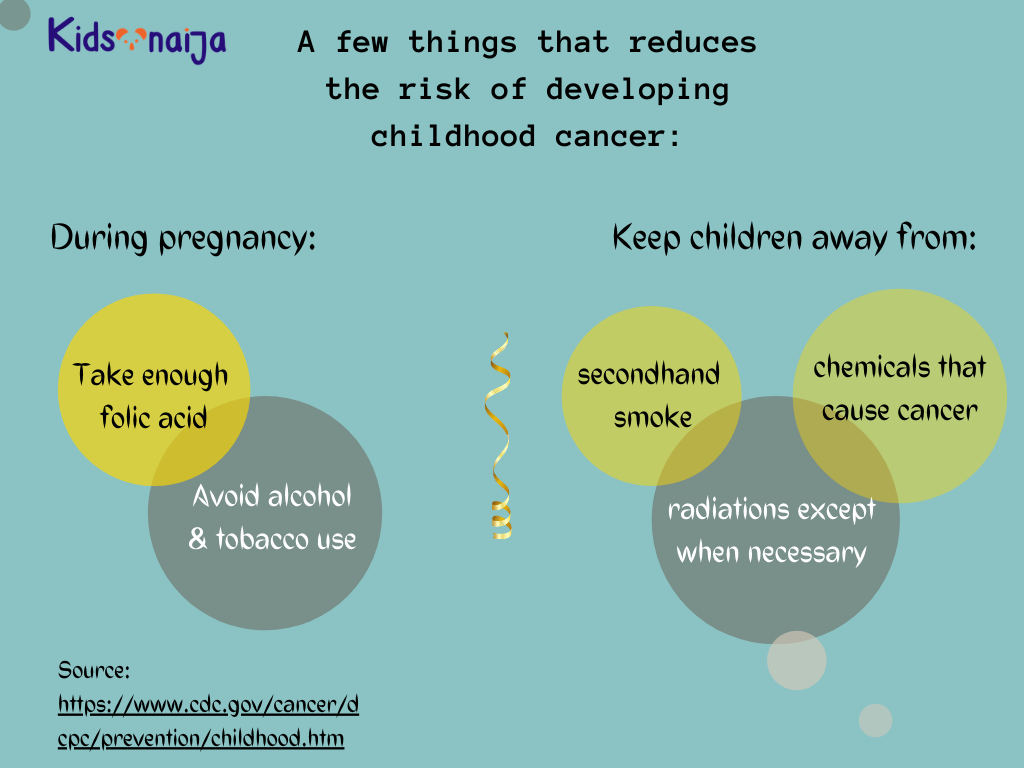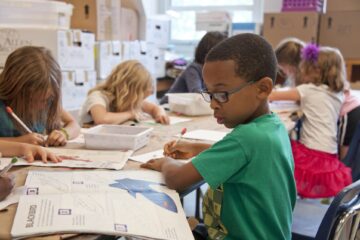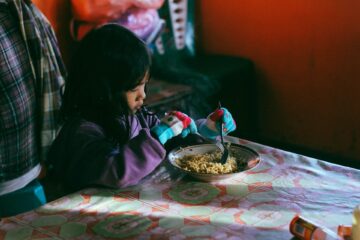Got questions about childhood cancer? Not to worry, others have the exact same questions as well, hence the need to treat these childhood cancer FAQS!
PS: If you’ve got more questions, don’t hesitate to leave a comment or ring up your favourite neighbourhood doctor!
- What is cancer?
- What are the most common types of childhood cancers?
- What are the early signs of childhood cancer?
- What do the different stages of cancer mean?
- Is childhood cancer curable?
- What are the chances of a child getting cancer?
- Why is cancer painful?
- Why do children with cancer lose their hair and fall sick a lot?
- Can we talk to children about cancers?
- Childhood Cancer Awareness Facts:
- Final words
What is cancer?
How would you define cancer? And if you had to explain it to a child, would your definition make any sense to that child or is it just a bunch of medical jargons?
Cancer is what happens when a genetic change in body cells began to grow and divide uncontrollably. Usually, when body cells divide to form new cells, these cells grow, divide, and get old. Once old, they die but cancerous cells do not die – they are immortals.
Instead, they begin to spread to other parts of the body. If the cancer cells originated from the brain, they might spread to the blood and other parts of the body.
A genetic change is a change that happens in our genes that are carried by the chromosomes – the cause of this genetic change in childhood cancer is unclear.
These cells become abnormal, mutated, or cancerous. A group of these cancerous cells (that forms a lump) in any part of the body is known as a tumour.
Who does cancer affect and why?
Cancer is no respecter of age or gender and neither is childhood cancer picky about who gets to have cancer. Cancer can affect both boys and girls, newborns, toddlers and older children.
It’s not exactly clear why children get cancer, because unlike adults, they are yet to be fully exposed to environmental and lifestyle risk factors. Hence, such factors only account for a minute percentage of cancers in children.
However, certain risk factors are chronic infections such as malaria and HIV. Other risk factors such as exposure to radiation and smoking (by parents) have been linked to childhood cancers.
Can you prevent cancers in children?
According to the WHO, since the causes of these cancers aren’t lifestyle or environmental factors, much can’t be done to prevent it.
The little we can do about cancer prevention in children can start in utero and can last a lifetime as well.

However, the focus should be on preventing children from developing preventable cancers as adults such as cervical cancer or liver cancer – both can be prevented by vaccination.
Is cancer contagious?
No, it’s not. Cancer isn’t something to be caught by playing with a child who has cancer. And you don’t need to stay away from them either.
But if you have a contagious ailment, it’s best to stay away from a child with cancer. A child with cancer needs to stay healthy and been around someone with a contagious disease is hazardous to their health. It might further weaken their immune system if they themselves come down with the contagious ailment.
What are the most common types of childhood cancers?
There are a lot of types and subtypes of cancer and the commonest ones are:
- Leukaemia
- Brain cancer
- Wilms’ tumour
- Neuroblastoma
- Lymphomas
- Osteosarcoma (bone cancer)
- Retinoblastoma
What are the early signs of childhood cancer?
The signs and symptoms of cancer can vary depending on the type of cancer a child has. But below, is a list of some of the general signs of cancer:
- Fatigue
- Headaches
- Sudden and excessive bruising and bleeding
- Recurrent unexplained weight loss
- Presence of a lump
- Pain in bones, joints, back, or legs
What do the different stages of cancer mean?
There are 5 general stages of cancer and each of these stages basically represents the severity/spread of the cancer.
Note: Each cancer has its own stages but generally, these are the stages of cancer:
- Stages 0 – at this stage, there’s no cancerous cells yet, however, there are cells that have the potential of being carcinogenic.
- Stage I – at this stage, the tumour is still tiny, not yet big enough to cause damage and it’s still localized in one region of the body.
- Stage II – unlike early-stage cancer (stage I), the cancer has gotten bigger and is spreading into lymph nodes and surrounding tissues/organs. Signs of cancer are usually noticed at this stage or at stage II.
- Stage III – Pretty much the same as stage II but the spread is more advanced
- Stage IV – commonly addressed as advanced/metastatic cancer, it’s the most lethal stage and in this stage, the cancer has spread quite far in the body.
Is childhood cancer curable?
Yes, childhood cancers are very much curable. Due to medical advancement in treatment plans, the survival rate for childhood cancers is now high and it’s said to be about 84%. This figure varies depending on the type of cancer and certain factors such as inadequate funding or medical personnel.
The chances are even higher if the cancer is discovered early enough. But the stats are generally lower in low and middle-income countries – about 15 to 45% of cancers in children are cured.
What are the chances of a child getting cancer?
The odds of a child getting cancer are quite low. But the odds are higher if there’s a family history of cancer, or if the child has a damaged (mutated) DNA that they inherited from their parents.
Exposure to certain risk factors like smoking and radiations also increase a child’s chances of having cancer.
Why is cancer painful?
Having cancer is quite a painful ordeal, one that I can’t fully comprehend or express. But why is it so? Remember tumours, right? A mass or collection of cancer cells, well, these tumours have the ability to spread and erode into your bones, cut off air supply, press down on your heart and nerves, and it can even cause bleeding in the pain. All of these are why cancer is painful.
The worse thing about it is that the tumour continuously grows, it grows out of the region where it started and gets into other body regions.
Why do children with cancer lose their hair and fall sick a lot?
Cancer cells are rapidly dividing cells and most treatment options are designed to target these kinds of cells, that is, cells which divide rapidly. But the problem is that there are some groups of healthy cells like the cells in our hair follicles and digestive tract that are also rapidly dividing.
And treatments like chemotherapy do not know how to differentiate between these healthy cells and cancerous cells, hence they damage both groups of cells.
When hair follicles are damaged, hair loss happen. And when cells of the digestive tract or blood cells are damaged, this might make children with cancer fall sick a lot. Want to read more on this? Then click.
Can we talk to children about cancers?
Yes, yes, and yes. We can, we should, and we must. Educating children about cancers equips them with the right knowledge, especially on ways they can avoid certain preventable cancers.
Childhood Cancer Awareness Facts:
- February 15th is world childhood cancer day. It’s a fixed date and the primary goal is to create as much awareness as is possible on that day.
- The official symbol for childhood cancer is the gold-coloured ribbon. Why is gold used for childhood cancer? Go figure! Gold is a precious stone and children are precious little humans hence, gold here signifies how much they mean to us and their resilience. The gold ribbon represents all types of childhood cancer!
- September is the official month for childhood cancer. Yeah, that’s one whole month of childhood cancer awareness facts, support, and everything else.
Final words
Childhood cancer is curable. The survival rates are quite high, however, in developing countries like Nigeria, the stats are lower.
This is because of certain issues like poor infrastructure, inadequate medical personnel (& funding), and of course, the ignorance about childhood cancers.
Many persons are still unaware that children can get cancers, hence why this article exists – it addresses a few childhood cancer facts as FAQs. They’ve no idea what signs to watch out for and the fact that there’s no screening technique for childhood cancer doesn’t make it any easier.
What can you do? Educate someone about childhood cancer. Push the government to do more, especially financially. Support and get in contact with childhood cancer NGOs. Make an impact.
Signing out,
Childhood cancer FAQs.


